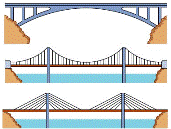Civil and Environmental Engineering
Date of this Version
2016
Citation
Beilstein J. Nanotechnol. 2016, 7, pp. 1556–1563. doi:10.3762/bjnano.7.149
Abstract
Adsorptive membranes have many applications in removal of contaminants, such as heavy metals and organic contaminants from water. Recently, increasing concentrations of pharmaceutically active compounds, especially antibiotics, such as chlortetracycline in water and wastewater sources has raised concerns about their potentially adverse impacts on environment and human health. In this study, a series of polyacrylonitrile (PAN)/activated biochar nanofibrous membranes (NFMs) with different loadings of biochar (0–2%, w/w) were fabricated using electrospinning. The morphology and structure of fabricated membranes was investigated by scanning electron microscopy, Fourier transform infrared and thermogravimetric analysis. The results showed that at 1.5% of biochar loading, the surface area reached the maximum value of 12.4 m2/g and beyond this loading value, agglomeration of particles inhibited fine interaction with nanofibrous matrix. Also, the adsorption tests using chlortetracycline showed that, under environmentally relevant concentrations, the fabricated adsorptive NFMs had a potential for removal of these types of emerging contaminants from water and wastewaters.


Comments
Copyright © 2016 Taheran et al.; licensee Beilstein-Institut. Used by permission.